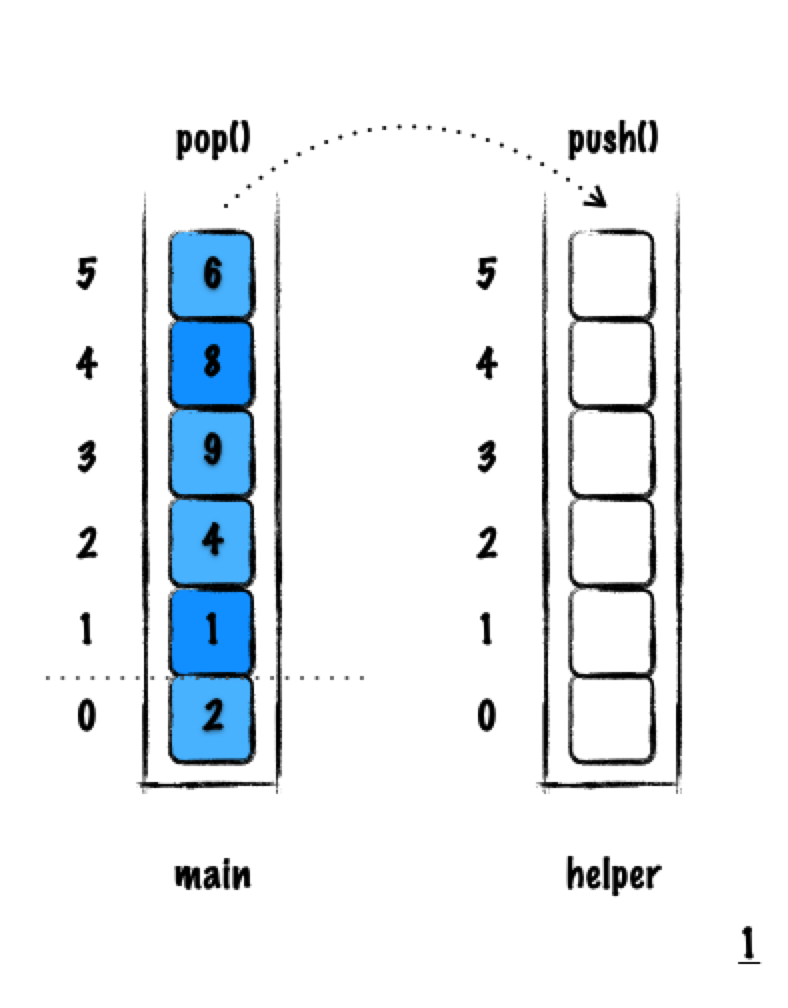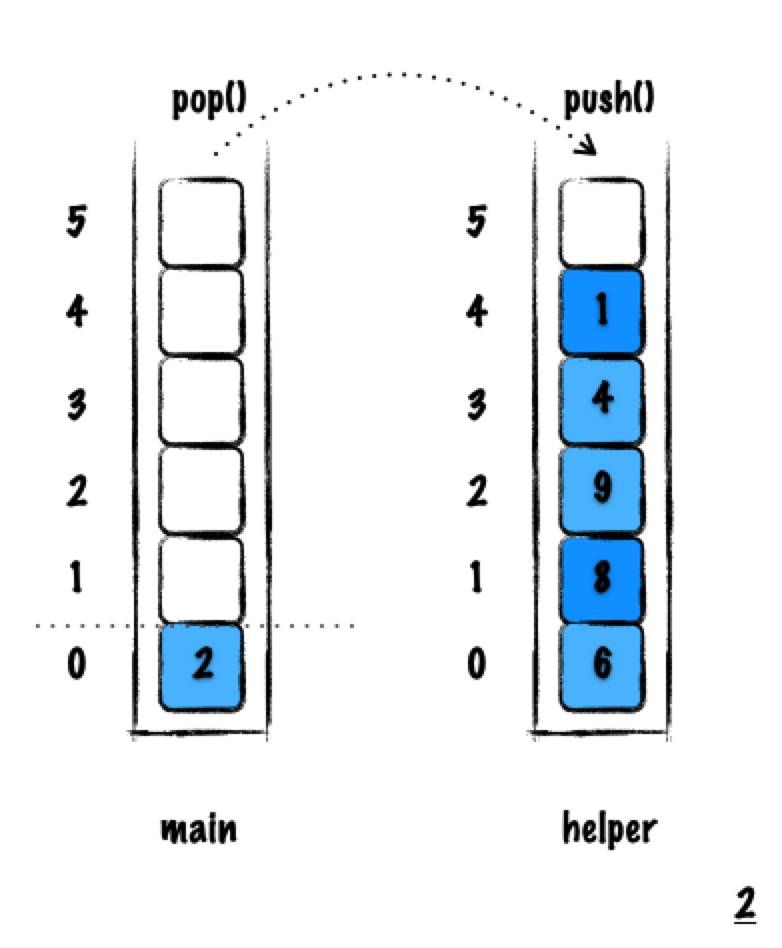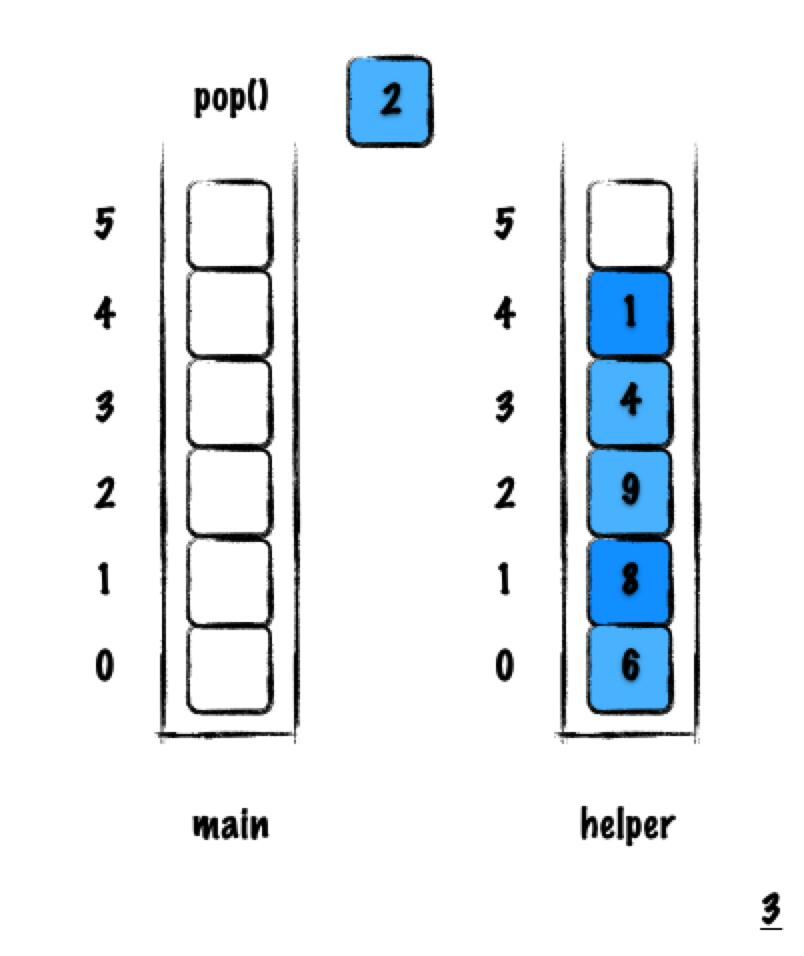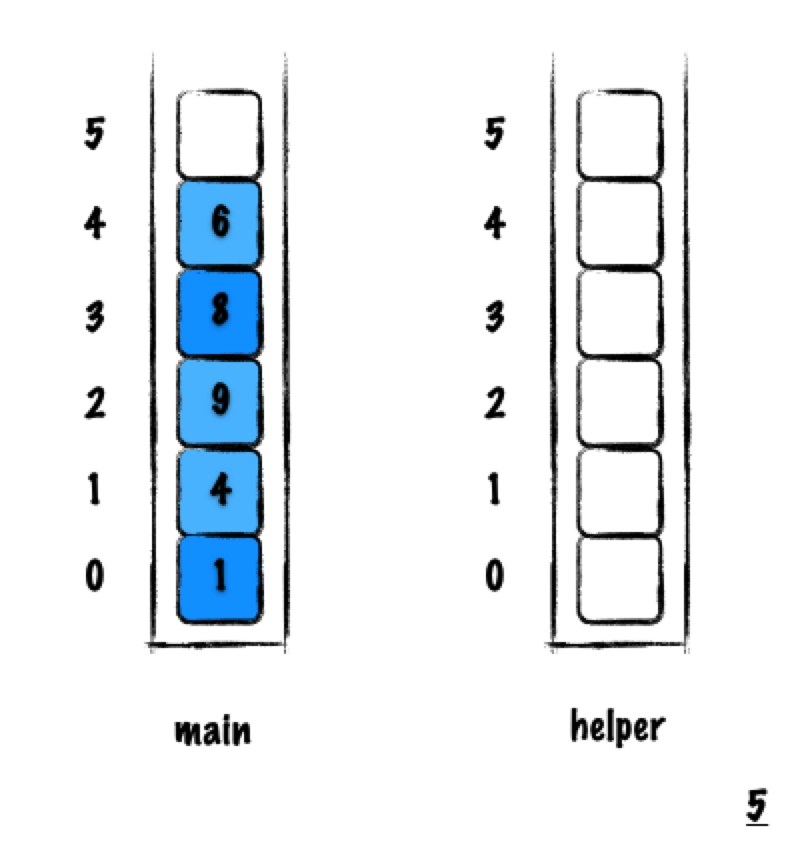栈实现队列
题目
Implement the following operations of a queue using stacks.
push(x)-- Push element x to the back of queue.pop()-- Removes the element from in front of queue.peek()-- Get the front element.empty()-- Return whether the queue is empty.
Example:
MyQueue queue = new MyQueue();
queue.push(1);
queue.push(2);
queue.peek(); // returns 1
queue.pop(); // returns 1
queue.empty(); // returns false
Notes:
- You must use only standard operations of a stack -- which means only push to top, peek/pop from top, size, and is empty operations are valid.
- Depending on your language, stack may not be supported natively. You may simulate a stack by using a list or deque (double-ended queue), as long as you use only standard operations of a stack.
- You may assume that all operations are valid (for example, no pop or peek operations will be called on an empty queue).
思路
使用一个栈作为存储队列元素的主栈,另一个栈作为辅助。队头对应主栈的栈底,队尾对应主栈的栈顶。
入队操作是在队尾,跟入栈在栈顶一致,直接使用入栈操作即可。
执行一次出队操作,应该将队头元素 2 出队,但栈只能从栈顶 pop,为了取到位于栈底的队头元素 2,先将其前面的元素一个一个出栈,再 push 进辅助栈暂存:

执行完结果如下:

这时再执行一次 pop 操作,就可以取到队头元素,完成出队操作:

之后我们需要还原主栈,恢复其原本的元素顺序,以便进行其它操作。将辅助栈内元素再依次 pop 出来,push 进主栈:

执行完结果如下:

代码实现
/**
* Initialize your data structure here.
*/
var MyQueue = function () {
// as a stack, only can use push and pop
this.s1 = [];
this.s2 = [];
this.size = 0;
};
/**
* Push element x to the back of queue.
* @param {number} x
* @return {void}
*/
MyQueue.prototype.push = function (x) {
this.s1.push(x);
this.size++;
};
/**
* Removes the element from in front of queue and returns that element.
* @return {number}
*/
MyQueue.prototype.pop = function () {
for (let i = this.size; i > 1; i--) {
this.s2.push(this.s1.pop());
}
let queueHead = this.s1.pop();
this.size--;
for (let i = this.size; i > 0; i--) {
this.s1.push(this.s2.pop());
}
return queueHead;
};
/**
* Get the front element.
* @return {number}
*/
MyQueue.prototype.peek = function () {
return this.s1[0];
};
/**
* Returns whether the queue is empty.
* @return {boolean}
*/
MyQueue.prototype.empty = function () {
return this.size === 0;
};
/**
* Your MyQueue object will be instantiated and called as such:
* var obj = new MyQueue()
* obj.push(x)
* var param_2 = obj.pop()
* var param_3 = obj.peek()
* var param_4 = obj.empty()
*/